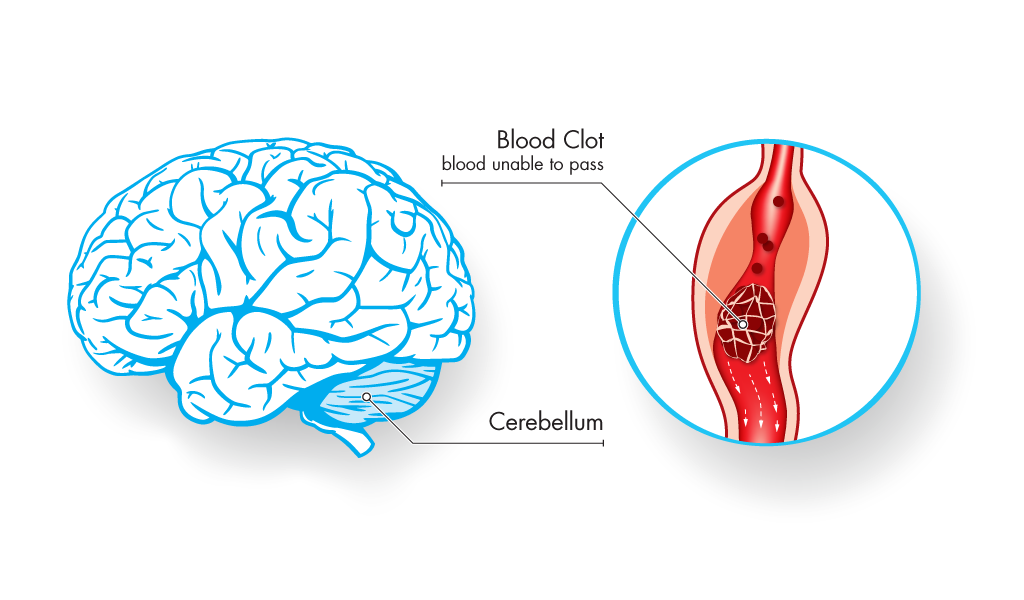Infarction of the hindbrain –
the stroke easy to overlook
Have you ever had a case of acute stroke in your family which was not diagnosed in time? I did, and it tremendously diminished my mother’s quality of life in her old age.
Most cases of acute stroke affect the forebrain, causing familiar primary symptoms as unilateral face dropping, partial numbness or paralysis of limbs and speech difficulties. But if these typical symptoms are missing, chances are high that a stroke goes unnoticed, with dire consequences for the patient.
Actually, a stroke can also hit the hindbrain or cerebellum, a fist-sized structure close to the scull base, primarily responsible for motor control. Cerebellar stroke is rare, accounting for only one to four percent of all strokes. However, it has significantly higher mortality rates and worse outcomes, mainly because it gets recognised too late to meet the narrow time window for effective treatment.
Symptoms of a cerebellar infarction are relatively nonspecific and overlap with other neurologic, cardiovascular, gastrointestinal, or systemic conditions, such as those frequently seen in elderly patients. For a physician unfamiliar with the patient, it is hard to judge whether slurred speech, disturbed balance and disorientation are acute symptoms or pre-existing conditions. Even if a stroke is suspected, the limited resolution of the CT in the cerebellar area can produce false negative results.

Schematic graph of the brain and a blocked artery
It is important therefore, to raise awareness of this masked insult and to train medical personnel, physicians, and paramedics, to look out for neurological symptoms like involuntary eye movement, a wide based gait or impaired coordination. At the slightest suspicion, the patient should be transferred to a stroke unit with the diagnostic means to confirm or exclude stroke, even if it is hiding in the base of the skull. If then it turns out that symptoms are caused by something else, nothing untoward has happened. But if it is a stroke, timely treatment is everything for the patient and their family: it might mean the difference between a full recovery or ending up as a nursing case. And if it comes to the worst, the difference between life and death.
Today’s World Stroke Day is an excellent time to remember stroke does not always come with the warning signs we have learnt to spot. If ever someone suddenly develops symptoms they never experienced before, nonspecific as they may be, those could well be the signs of acute stroke. Just one which affects a different part of the brain. In all cases, time is of the essence, no matter where the stroke hit!
Author









